I Photograph Birds in My Backyard by Setting Up Stages
![]()
Last year I joined my local photography club. The club holds regular competitions and I was amazed by the quality of the bird and wildlife photographs. I’ve never been much of a natural history photographer. So it’s not surprising that my own photographs did very poorly in competitions.
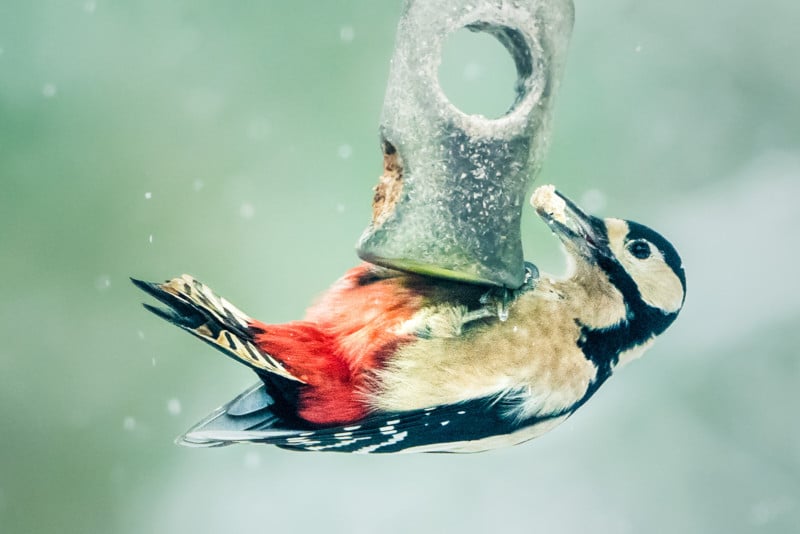
But this piqued my interest. I wondered what makes a good wildlife photograph. It occurred to me that wildlife photography has more than a passing resemblance to street photography. This is a genre in which I feel more comfortable.
One of the secrets of street photography is to first find your “stage” and then wait for the subjects to appear. So I thought I would apply this to photographing garden birds. I decided to set up a stage and then wait for the birds to arrive.
I have a bird table in my garden, but I knew that I needed to create a stage that didn’t reveal the “hand of man”. So I hunted down a moss-covered log and wedged it in between the table. I then baited the back of the log to encourage the birds to sit on it.
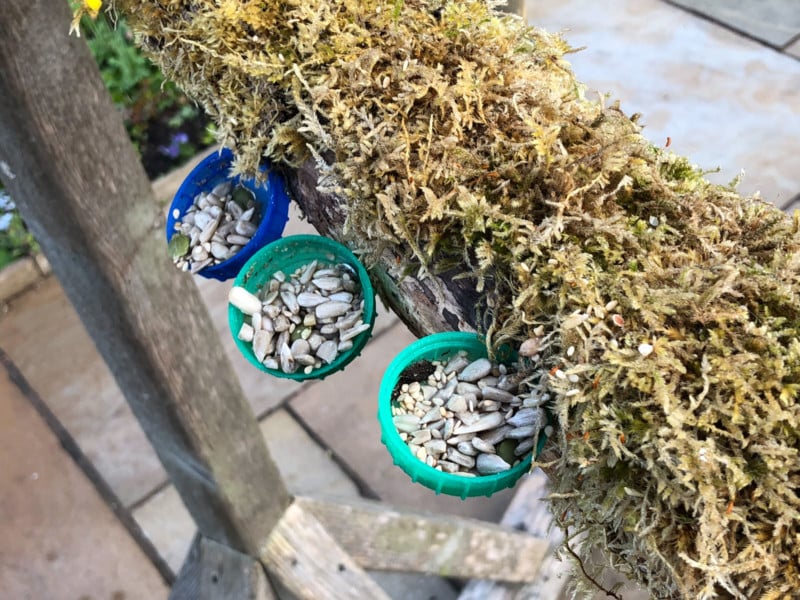
I wanted to make the photographs in my own style, so I decided to add off-camera flash. I then set up my camera and triggered it remotely.
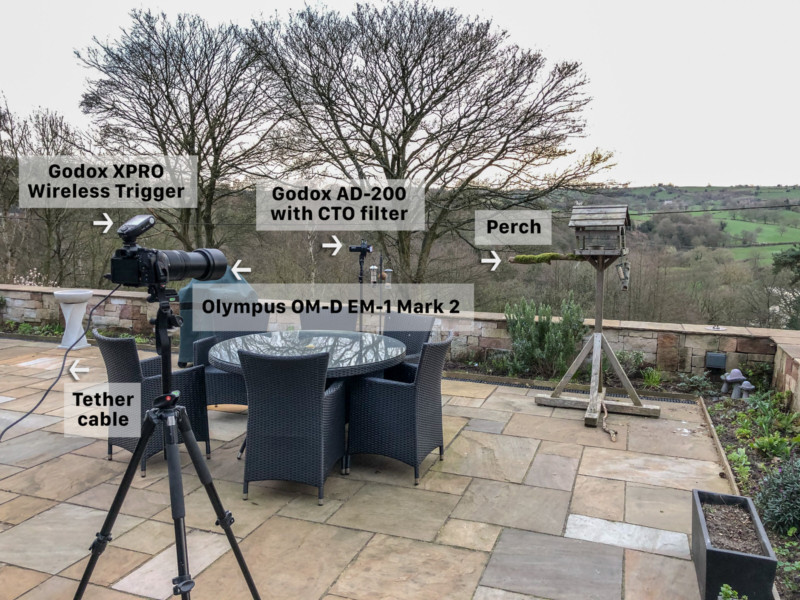
Here are some of the best examples.
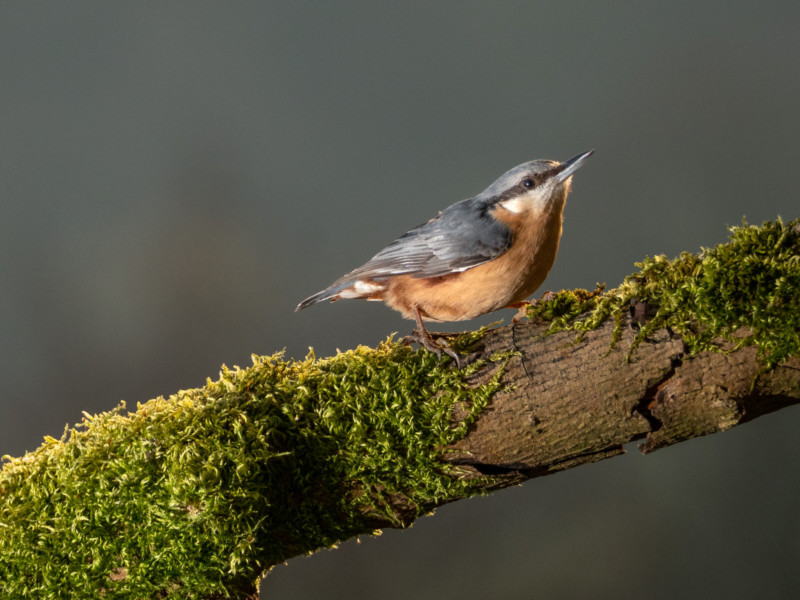
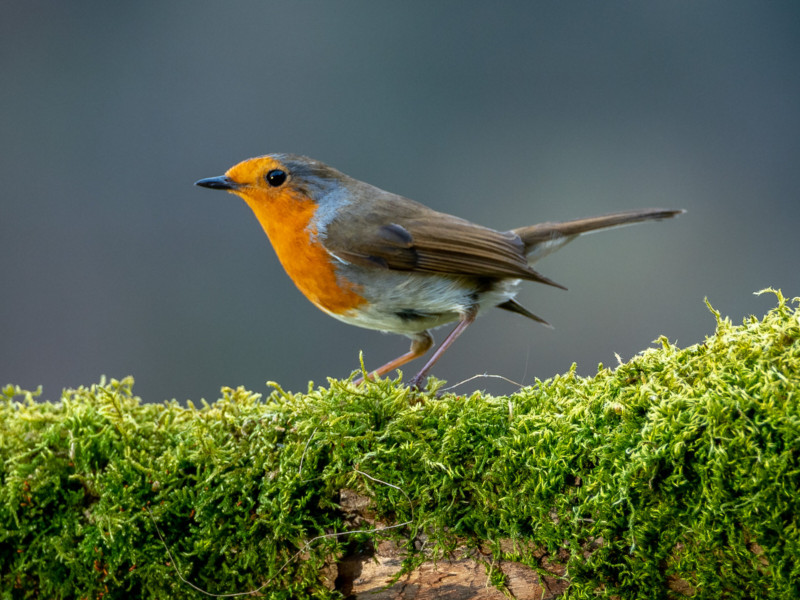
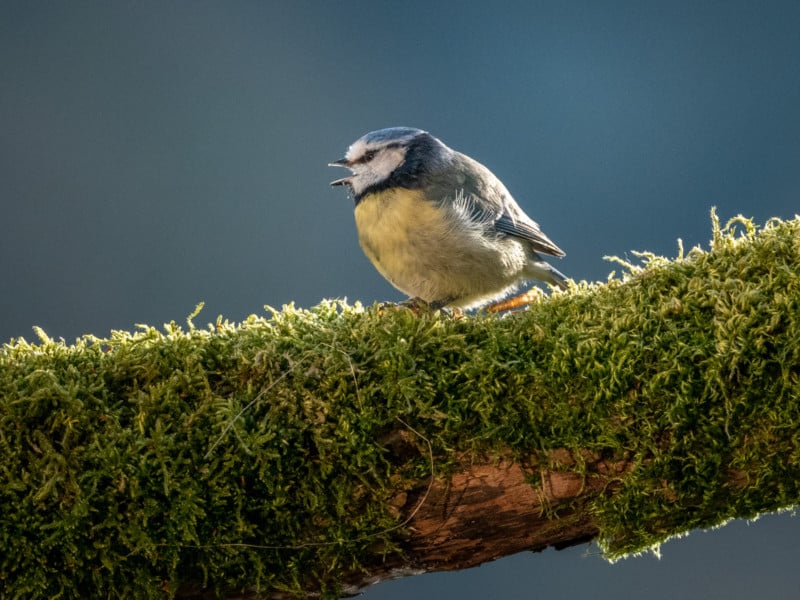
Photographing birds on a mossy log was beginning to feel a little like stamp collecting, so I thought I’d change things up.
As I watched the birds, I realized that many of them used the log as a kind of queuing post as they waited to get on the bird table. This gave me an idea. I clipped some flowers and blossom and attached those to the other side of the bird table.

I then captured this image. It was like someone turned on a lightbulb in my head.
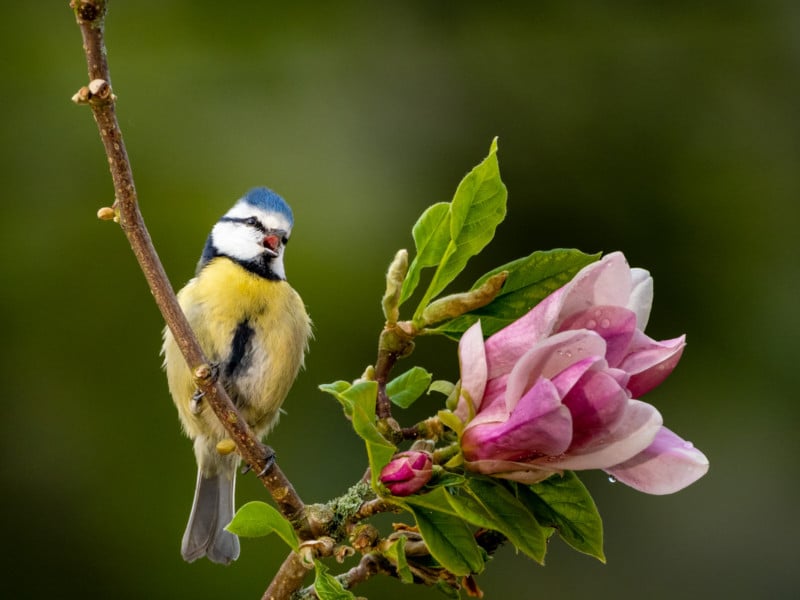
I loved the storytelling feel of this image. Time for more of the same!
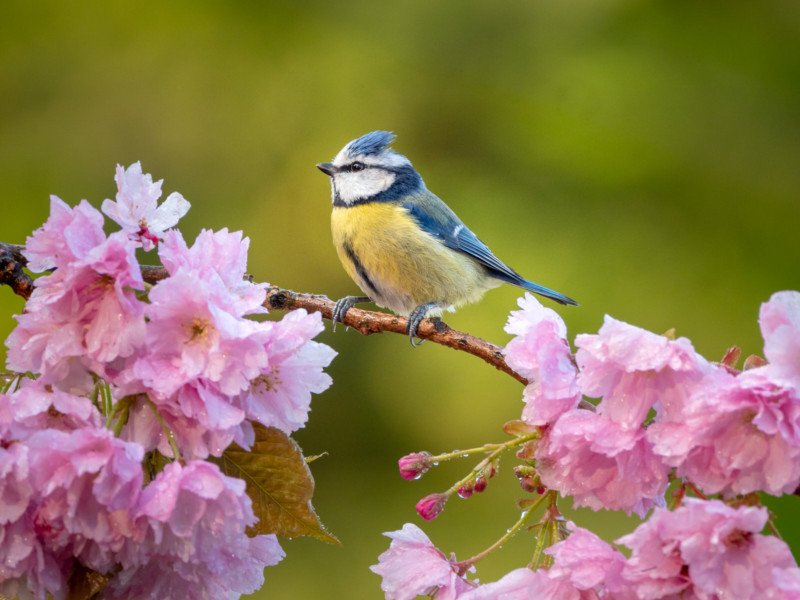
I was getting a little addicted and wondered what other scenes I could create. So my next step was to create a reflection pool.
Here’s an example of a picture I took at a bird hide with a proper reflection pool. When wildlife photographers create these, they are fairly long to get the best reflection.
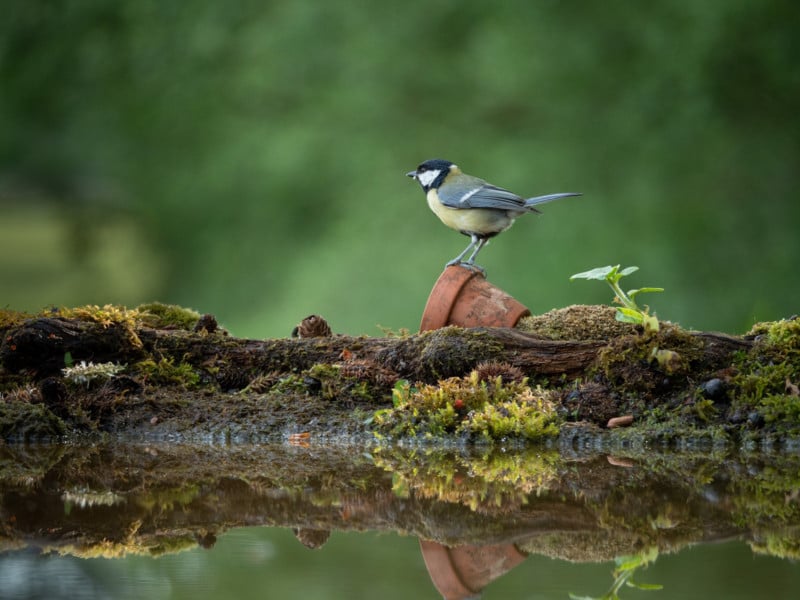
I decided to do it on a miniature scale by using a plastic tray from a garden center.

When I first set it up it was raining, so I took some photographs from inside my conservatory.
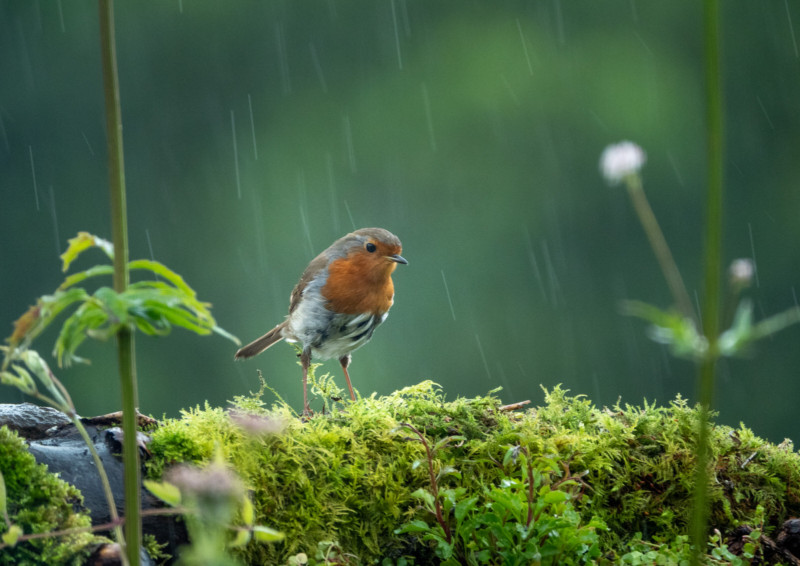
The reflection pool is so small that there’s really only one angle you can shoot from. Once the rain stopped, I set up my camera outside and got these.
It’s interesting to compare the following image with the woodpecker photograph at the top of the article. This one certainly appears more natural even though it was taken within 2 meters (~6.6 feet) of the original.
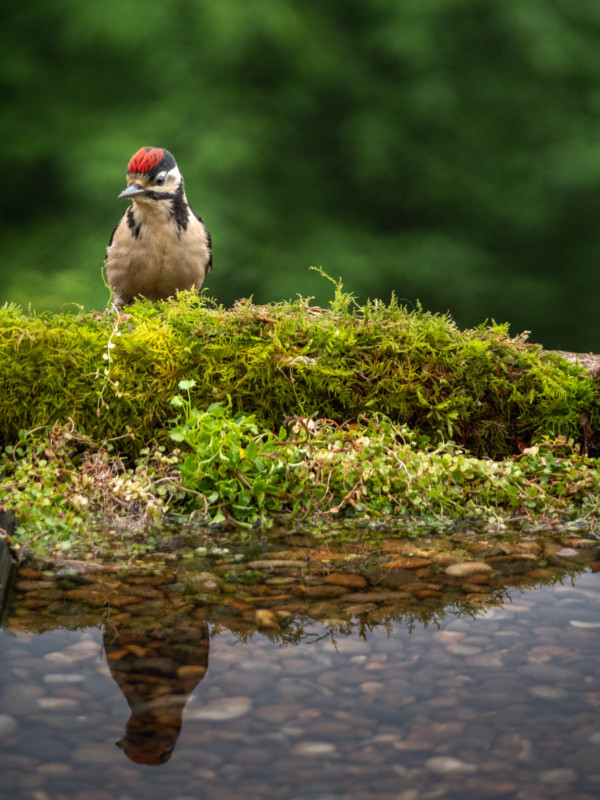
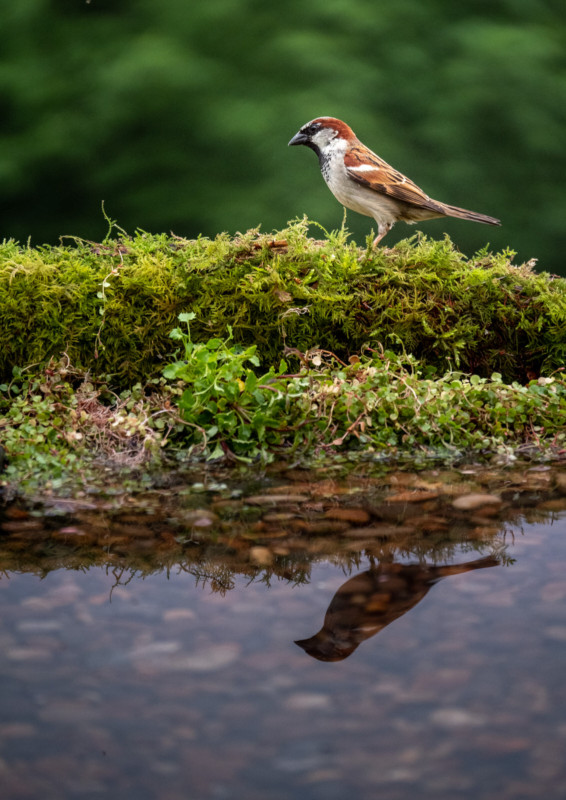
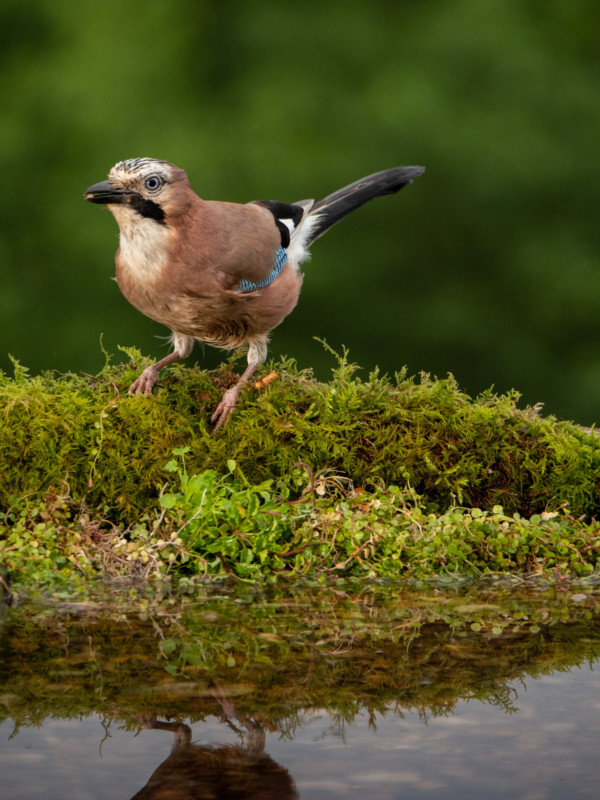
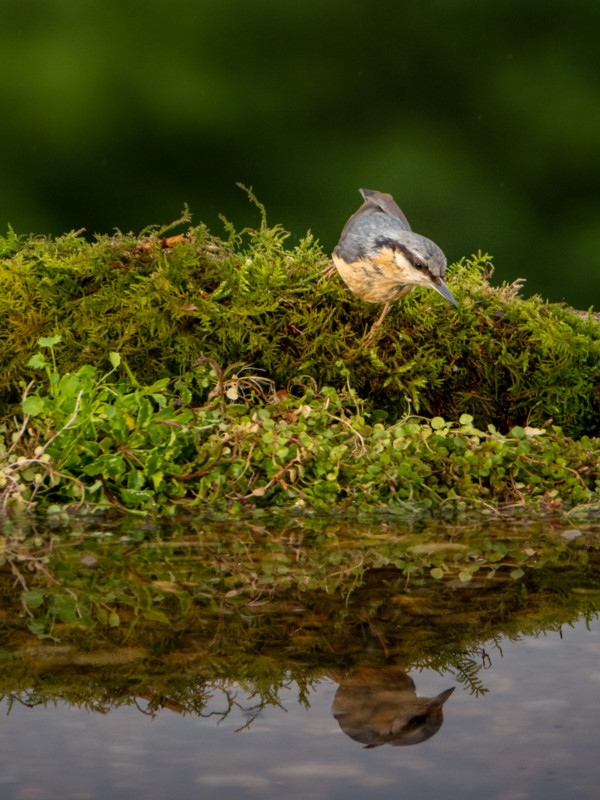
My aim in doing this was to end up with two photographs worthy of a club competition. I think I achieved that. What I didn’t expect was for it to be such fun. I now know a lot more about birds than I did a couple of months ago and it’s turned out to be really enjoyable watching (and predicting) their behavior.
I still don’t think I’m much of a natural history photographer, but I’ve definitely got some insight into why other people do it.
About the author: David Travis is a travel photographer based in the Midlands in England. The opinions expressed in this article are solely those of the author. You can find more of Travis’ work (and buy prints) on his website, Facebook, Twitter, and Instagram. This article was also published here.